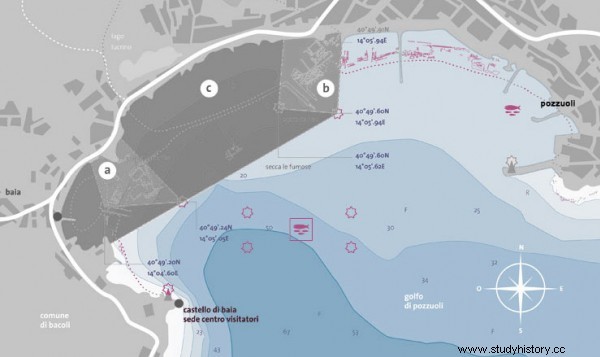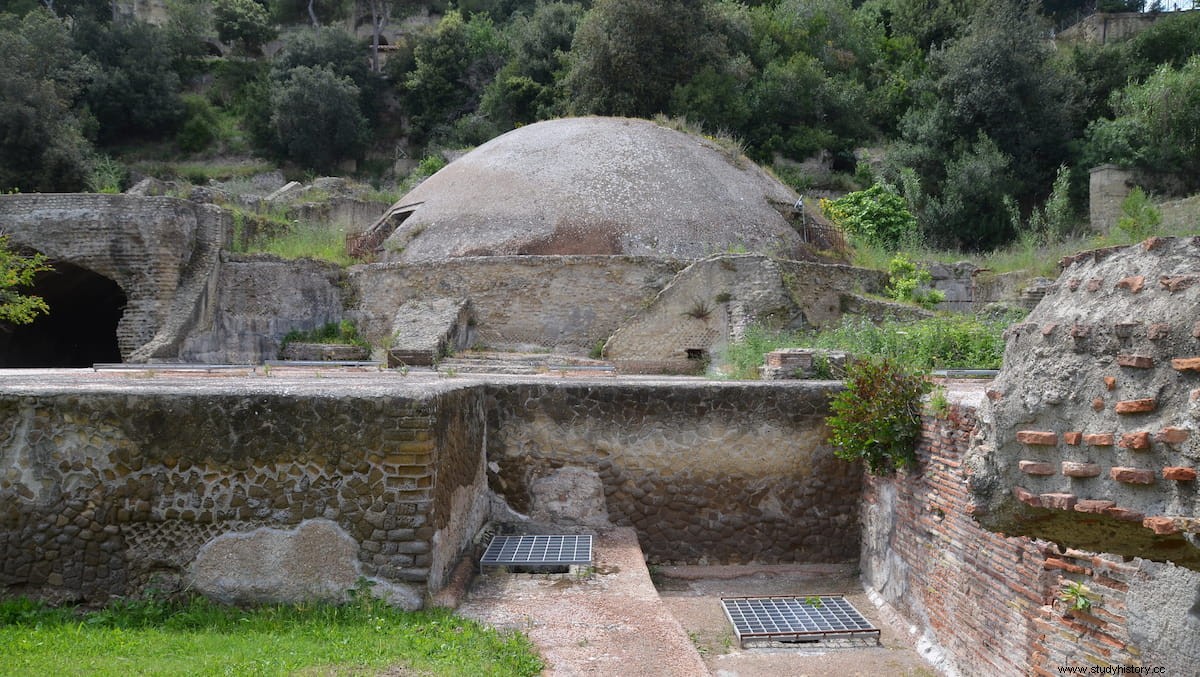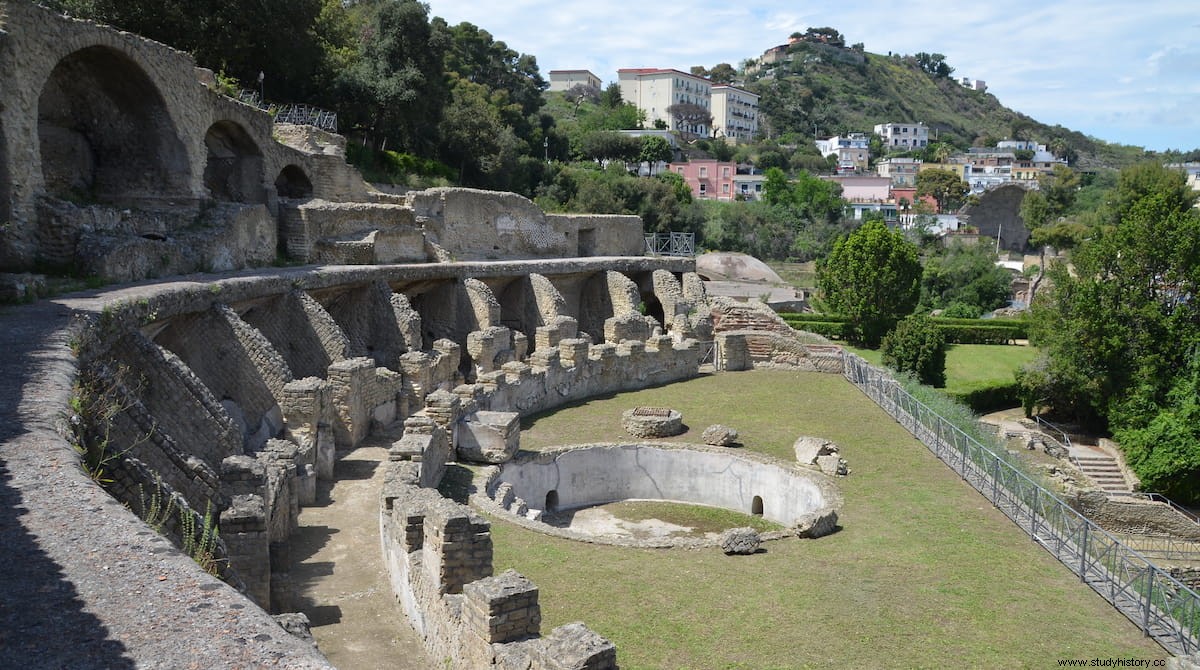Located on the northwest coast of the Gulf of Naples, the city of Bayas (in Italian Baiae) was for centuries the most famous place in the Roman Empire, a kind of Las Vegas where the rich and powerful came to hedonistically enjoy their riches, and the offer of leisure, luxury and corruption that it offered, far superior in every way to Pompeii, Herculaneum or Capri.
Its name derives from Baius, the helmsman of Odysseus's ship (Ulysses) according to Homer, whose tomb was supposed to be there, according to the poet Lycophron of Chalcis in the 3rd century BC. It was located on an area with a lot of volcanic activity, which led to the construction of numerous hot springs and bathhouses, where the hot water was taken directly from the underground sulphurous springs through a complex network of channels and chambers.

From the 2nd century B.C. The fame of the place as a center for the treatment of diseases spread throughout the Italian peninsula thanks to Tito Livio, who mentioned its therapeutic properties in 176 BC, and the Romans who could afford it came to perform medical treatments.
By the end of the Republican era, during the 1st century BC, Bayas had already become fashionable as a luxury resort, and it is known that Marius, Lucullus and Pompey were regulars and that Julius Caesar had a villa on the highest point of the city. area, the current Castello. Augustus, the first emperor, expropriated much of the city to make it an imperial residence, which increased its appeal among the powerful classes. By then it already had a casino and it is said that the size of the pools in its private villas was memorable.
Nero had his own palace built in the middle of the 1st century and Hadrian died precisely in Bayas in 138. Almost all the emperors frequented the place, especially Caligula. According to Suetonius, in the year 39 the astrologer Thrasyllus of Mendes predicted that Caligula had the same chance of becoming emperor as crossing the Gulf of Bayas on horseback. So the eccentric character had a bridge built of boats almost 5 kilometers long, joined with boards and leveled with sand, which crossed the entire gulf to the port of Puteoli. When it was finished he crossed it on the back of his horse.

According to the historian Dio Cassius, he even had small rooms erected at intervals for resting, complete with drinking water. In fact, it seems that as late as the 18th century, locals showed tourists the remains of Caligula's Bridge . Some historians consider that, beyond the eccentricity of a madman, the idea of building a bridge over the gulf was a revolutionary idea and very convenient for the city.
Historical and documentary sources tell how life in Bayas offered all kinds of vices and leisure possibilities. Sextus Propertius describes it as the cubicle of debauchery and vice , and Seneca as a whirlwind of luxury and port of vice . It seems that beach parties were legendary throughout the Empire, though no more than drinking competitions.

The festival lasted until the sack of the barbarian invasions and still lasted until the Muslims devastated it in the eighth century. It is known that in the 13th century Frederick II of Swabia still frequented the baths. By 1500 a plague of malaria ended up leaving the city deserted. However, in the 16th century Pietro di Toledo built the castle of Baja for Charles V there on the ruins of the Roman imperial palace, when the revelry had long since been just a dim memory.
During the 16th century, volcanic activity and several earthquakes ended up submerging the city, which today is part of an underwater archaeological park, so impressive that it attracts thousands of divers every year. Under the water you can see numerous sculptures, mosaics, remains of buildings and roads, either on board tourist boats with a transparent bottom, or by practicing snorkeling and scuba diving. The remains of the city extend from the very shore to a depth of 15 meters.
Here it was found, sometime before 1803 when the English antiquarian Thomas Hope was already exhibiting it in his London gallery, the famous Aphrodite of Berries . Among the ruins that are out of the water, the circular Mercury Temple stands out. , also known as Echo Temple for its acoustic properties, which with its 22 meters in diameter had the largest dome in the world made of a single block of tuff and mortar , until the construction of the Pantheon of Agrippa in Rome in 128 AD. It was not a temple, but its curved walls caused it to be mistaken for one when it was rediscovered. Its actual function remains unclear.
